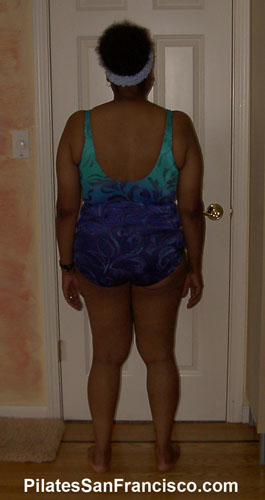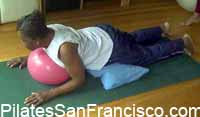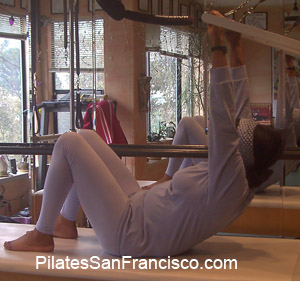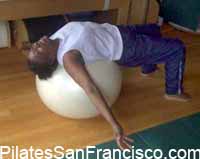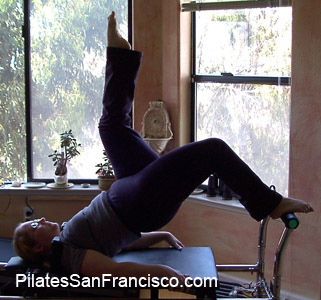PILATES SAN FRANCISCO
Low Back Pain
Evaluation:
Always do a thorough intake and make sure the client seeks a qualified medical professional if you suspect the pain is coming from something other than bad posture, misalignment, or overuse.
Evaluate posture and alignment – are there significant differences between left and right sides?
Discuss and watch the client doing ordinary tasks – how do they sit in chair, get out of bed, reach for something on a shelf. Can these be done in a more comfortable and efficient way?
Exercises:
-
Mat
- Lower back massage on small sensi (soft spiked) ball
- Pelvic clock Coccyx curl (feet flat on mat and against a wall)
- Coccyx curl using a foam roller
- Marching and dead bug
- Abdominal tightening in quadriped position – cue to engage abdominals without changing spine
- Flexion lying over a 75 cm ball
- Psoas stretch using a foam roller
- Abdominal and oblique curls using c-shape and bringing elbow to knee
- Rollup Hamstring stretch with towel or theraband
- Bridging
-
Cadillac
- Rollback
- Push Through Shoulder stand (no spring, safety strap on bar)
- Shoulder stand using foam roller for lower back support
- Parakeet
- Monkey
- Upper arms finished with a curl
- Bridging, clock, marching using the sling suspended on long (leg) springs
- 75cm ball
-
- Bridging – lower legs on ball
-
- Butterfly (extension) – pubic bone on ball (when there is no pain)
- Curls
- Rollup
-
Step Barrel
- Curls
- Rollup with extension
- V- sit
- Butterfly (extension) with pubic bone on crest of barrel
-
Reformer
- Curls
- Hundreds
- Coordination
- Short Spine
- Stomach Massage
- Knee Stretch I (round back) and II (neutral spine)
- Elephant
- Upstretch
- Long Stretch
- Tendon Stretch
Reminders:
Avoid twisting motions and teach the client to lengthen both sides of the back evenly.
Teach neutral pelvis and c shape.
Use wedges, balls and pillows to help the client achieve and maintain positions.
Start slowly at the first session adding difficulty and variety as you get to know the client and the condition becomes less painful.
Listen to and ask for client feedback – how does that feel?
